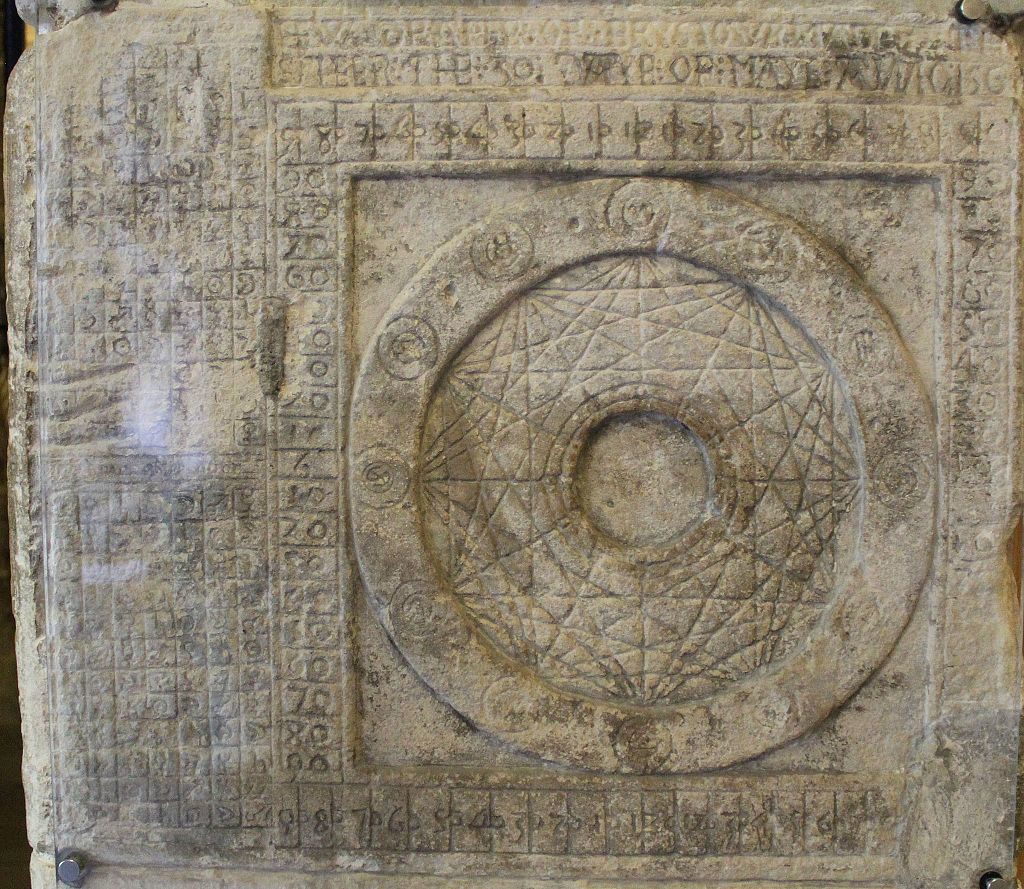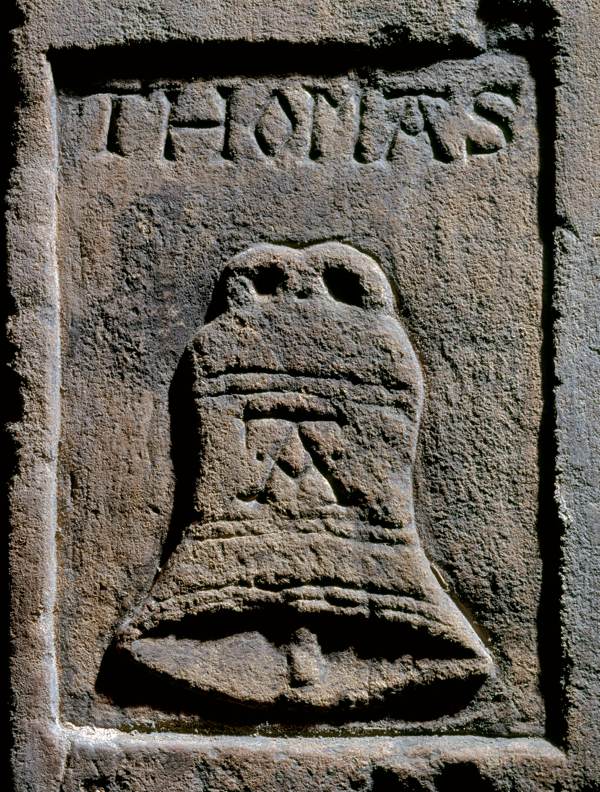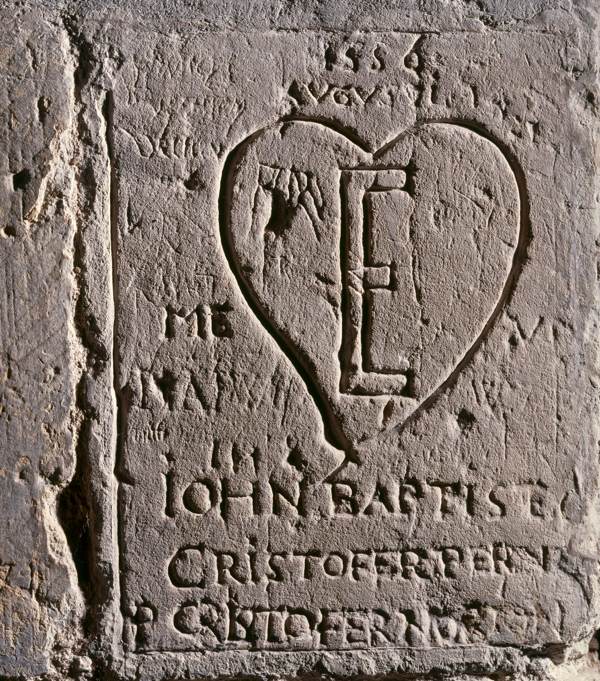You’ve probably learned about the Tower of London prison’s most famous prisoners—Anne Boleyn, the Two Princes, and even Queen Elizabeth I herself. You’ve heard of the rack, the beheadings, and the hundred or so prisoners who awaited execution here. You might even know that only 22 executions actually happened there, or that the last occurred in 1941. But, what you might not know about the Tower of London prison could be the most interesting part—did you know that the former prison is covered with 400-year-old graffiti?
With over 268 inscriptions written over four centuries, most of the prisoners who literally carved their sentence into stone have been lost in time. Many of the etchings are religiously connoted, as the 16th and 17th centuries saw both the most prisoners and the most religious and political strife in Europe’s history. Some carvings are more painstaking in detail than others, as prisoners could spend anywhere from days to decades awaiting their sentence. While most of the “artists” remain anonymous, there are several inscriptions that are believed to be done by or in support of some of the tower’s most notable prisoners.
Hew Draper, a man convicted on suspicions of practicing sorcery, completed this intricate piece during his time imprisoned, beginning in 1561. While he plead not guilty to these charges, this zodiac sphere was seen as confirmation of his guilt. This astrological map, as well as several other carvings, are an indicator of the amount of time Hew must have spent imprisoned, but his fate remains unclear.
One of the first of many to die in Henry VIII’s quest for a male heir, Thomas Abel created this bell during his several years spent in the tower. As chaplain to Henry VIII’s first wife, Queen Katherine of Aragon, he refused to acknowledge the pair’s divorce and the King’s subsequent marriage to Anne Boleyn. Several centuries after being hung, drawn, and quartered for his defiance of the King, Thomas was made a saint, and this marking remains a symbol of his martyrdom for the Christian religion.
Many of the writings on the wall refer to Queen Mary and Queen Elizabeth, written in support of each sister’s claim to the English crown. However, the E shown above is assumed to have been written by the future Queen Elizabeth I’s tutor, Giovanni Battista Castiglione, during his known time in the tower. He was imprisoned in 1556 after Mary, the reigning monarch, and half-sister to Elizabeth, imprisoned him for smuggling letters to Elizabeth during her imprisonment. While he was later released, he remained jailed in the Tower of London prison long enough to complete other inscriptions which he also signed.
One of the most elaborate graffiti is a memorial to the Dudley brothers, who were imprisoned for the part they played in trying to place Lady Jane Grey on the English throne. While the writing has been damaged over the years, the carving by John Dudley once said, “You that these beasts do wel behold and se may deme with ease wherefore here made they be with borders eke wherein 4 brothers names who list to serche the grounde.” This poem references the Dudley family crest, carved in the center, and John’s four brothers that were imprisoned alongside him. The roses, carnations, oak leaves, and honeysuckle around the border are meant to represent Ambrose, Guildford, Robert, and Henry, respectively, with John’s signature at the bottom. All four mentioned were charged and convicted traitors by 1553, but only Guildford, Jane’s husband, was executed. Shortly after, the brothers were released, and John died only 10 days later. Robert Dudley, imprisoned at the same time as the future Queen Elizabeth I, would later become her favorite, and also her rumored lover.
Related articles




